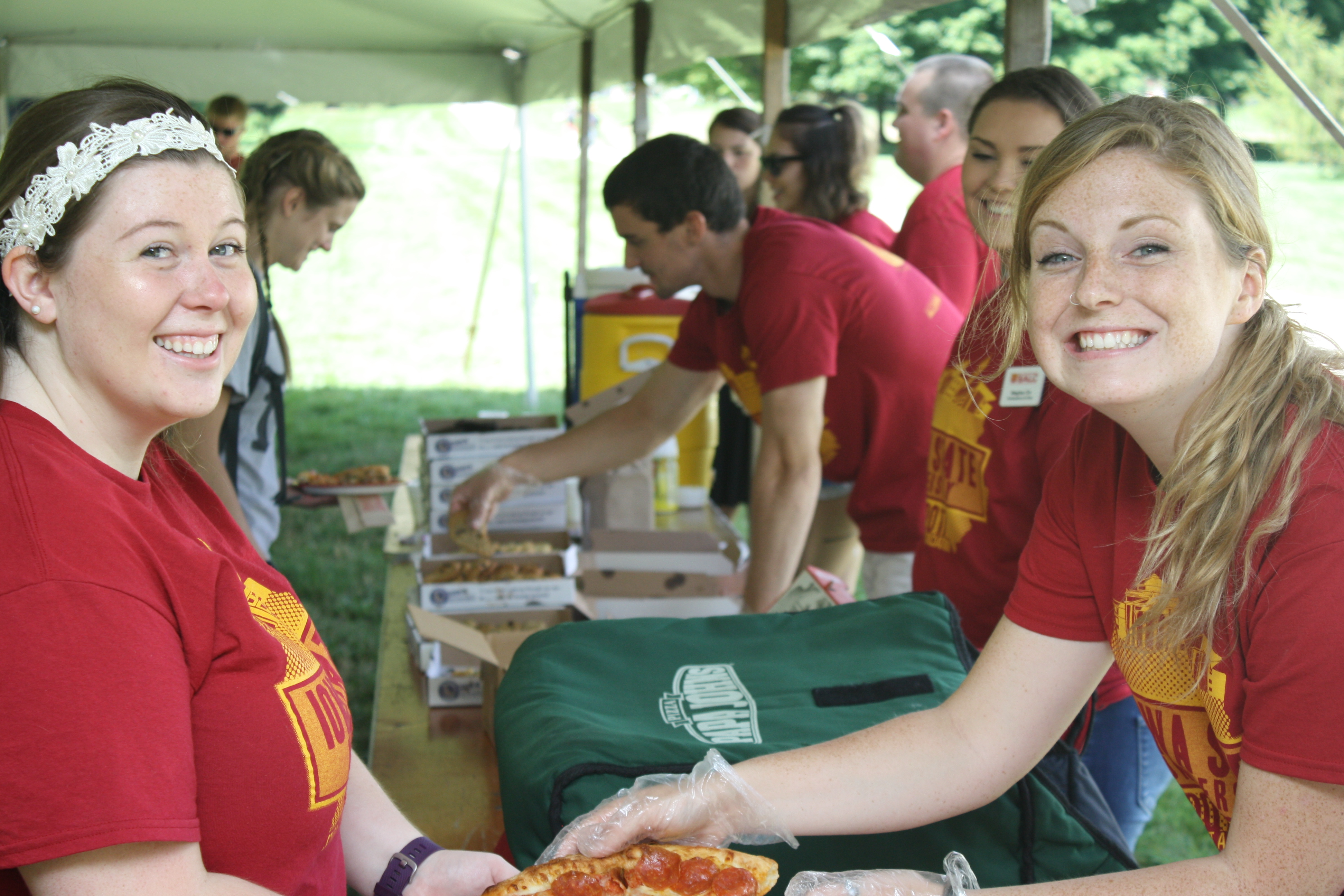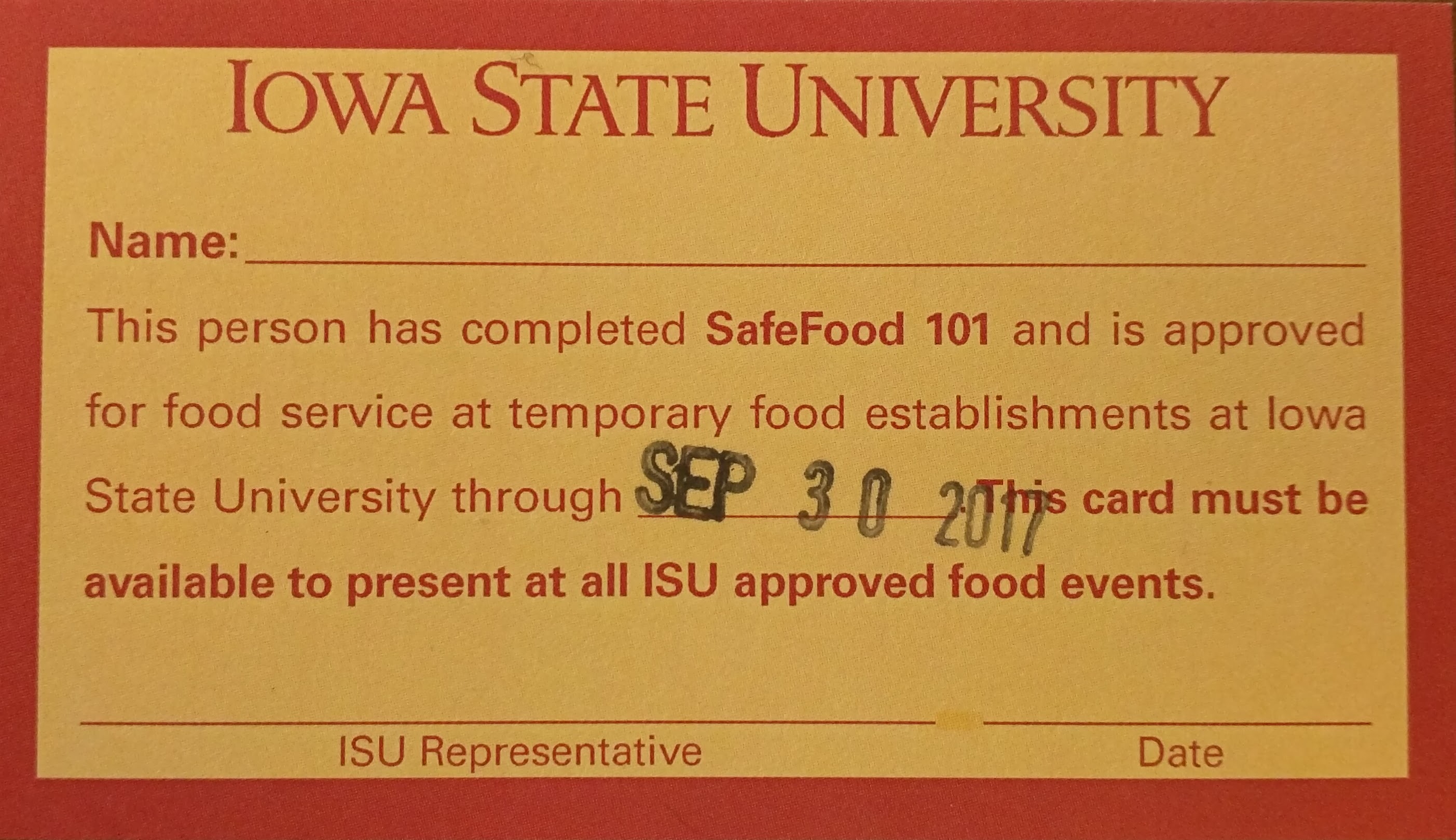 By Anita Ingram, Assistant Vice President and Chief Risk Officer for University of Cincinnati and Co-Chair of the URMIA Honors Committee.
By Anita Ingram, Assistant Vice President and Chief Risk Officer for University of Cincinnati and Co-Chair of the URMIA Honors Committee.
The URMIA Honors Committee created the Innovative Risk Management Solutions Award in 2007 to achieve three goals: recognize creative efforts, share solutions and promote innovation. We are proud to award Iowa State University's (ISU) Student Organization Food Service Training, "SafeFood 101," with the 2016 Innovative Risk Management Solutions Award. During the 47th Annual Conference in San Diego, three representatives from ISU, Susie Johnson, director of risk management; Kurt Beyer, risk analyst; and Joseph Rayzor, claims coordinator, were recognized for this project. I had the pleasure of delivering the award, and together with the Honors Committee, we felt the applicability of this training for fellow URMIA members was so broad that we wanted to share it as soon as we could with the rest of our membership.
Please watch the informative video about ISU's innovative program, and read on to learn more.
What risks or exposures were addressed by your solution?
ISU has a long history of dedicated and vigorous student organizations and activities. At this time, there are nearly 900 active recognized student organizations at ISU, and many of them plan events that involve food service to the public. Events range from small gatherings of students to food sales as fundraisers for clubs to large student-run celebrations serving food to 10,000 people or more over a period of days. Foodborne illness is a risk when food is being handled and served, and training those who handle/serve food is a priority for mitigating this risk. As a result of these large food events and the necessity to train over 1,000 students annually regarding food service and safety, the ISU Office of Risk Management (ORM) has always taken an active role in providing training to student organizations regarding the proper methods for handling and serving food at public events. However, with the frequency of events, number of students involved and staffing requirements for trainings, a new method for educating and approving students to participate in food service events was necessary.
What makes your solution a unique or innovative approach?
 Annually training over 1,000 students about food safety in a traditional in-person setting was a daunting task, requiring a great deal of time, space and effort to successfully accomplish. The ISU “SafeFood 101” training was developed as a method to allow students to be successfully trained in consistently safe food handling and serving procedures while engaging those students effectively and at their convenience. The training is an online video module with additional informative supplements that includes an online instantly graded quiz that allows students to gain competency in food service and handling. Upon successful completion of the course, students are able to acquire a SafeFood 101 card to certify they are approved to participate in a food service event on campus. In order to develop the best training possible, ISU ORM collaborated with the Iowa State College of Human Sciences and University Extension to co-develop the training and video modules with faculty who are content experts. SafeFood 101 has allowed the Office of Risk Management to accomplish an essential public safety service within the most advantageous environment to connect with and engage current students while at the same time helping the many ISU student organizations implement safe events that include food service.
Annually training over 1,000 students about food safety in a traditional in-person setting was a daunting task, requiring a great deal of time, space and effort to successfully accomplish. The ISU “SafeFood 101” training was developed as a method to allow students to be successfully trained in consistently safe food handling and serving procedures while engaging those students effectively and at their convenience. The training is an online video module with additional informative supplements that includes an online instantly graded quiz that allows students to gain competency in food service and handling. Upon successful completion of the course, students are able to acquire a SafeFood 101 card to certify they are approved to participate in a food service event on campus. In order to develop the best training possible, ISU ORM collaborated with the Iowa State College of Human Sciences and University Extension to co-develop the training and video modules with faculty who are content experts. SafeFood 101 has allowed the Office of Risk Management to accomplish an essential public safety service within the most advantageous environment to connect with and engage current students while at the same time helping the many ISU student organizations implement safe events that include food service.
What was the total budget for this project?
The original video modules were recorded and edited by Extension IT staff at a cost of $775, while subsequent updates and edits have been handled by ORM staff and posted to YouTube at no cost. The training module is hosted at ISU for no cost and has recently been migrated to the university's BlackBoard platform, also for no additional cost. The printing of over 1,000 SafeFood wallet-sized cards for students cost less than $100 annually.
How many staff were allocated to this project and for what length of time?
The course was initially created through the work of two faculty within the ISU College of Human Sciences and one ORM staff member. Ongoing edits and improvements to the training materials are coordinated by one ORM staff member in collaboration with two faculty.
Is your solution scalable for smaller/larger campuses?
The SafeFood 101 training is nearly infinitely scalable as the actual SafeFood cards are the only limiting factor. The training modules and videos can handle the demands of thousands of students simultaneously, although students take the training as needed throughout the year.
What resources were utilized/needed to develop the program? (For example, collaborating with other departments; purchasing or expanding a software package; using a broker or outside consultant, etc.).
 The ORM collaborated with a college on campus, as well as our University Extension, collaboratively drawing on institution programmatic strengths to develop a suitable training that mitigated the risk of students handling and serving food on campus. The training was initially hosted by Extension for no cost within training modules that already existed. SafeFood 101 was recently migrated to BlackBoard, which ISU has a license to use for courses and on which the training could be hosted for no cost.
The ORM collaborated with a college on campus, as well as our University Extension, collaboratively drawing on institution programmatic strengths to develop a suitable training that mitigated the risk of students handling and serving food on campus. The training was initially hosted by Extension for no cost within training modules that already existed. SafeFood 101 was recently migrated to BlackBoard, which ISU has a license to use for courses and on which the training could be hosted for no cost.
Was buy-in from an executive group required for success? Why or why not?
Senior-level authorization was not required, though staff from the Business and Finance and Student Affairs divisions were kept informed by their respective teams through implementation of the program. Moving to an electronic version of the training was effective, efficient, and accomplished at a low cost, which all lent itself to natural support across campus.
Previous Article | Insights Home | Next Article